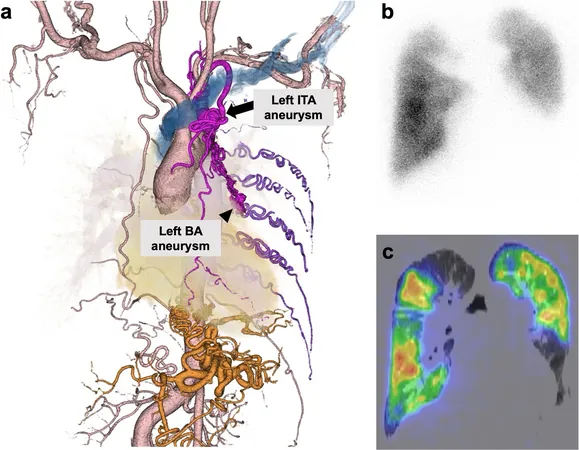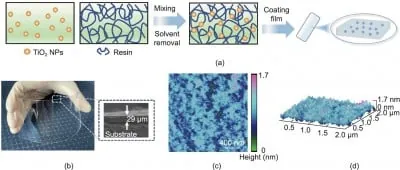
Unexpected Discovery: A Rare Internal Thoracic Artery Aneurysm Linked to Protein S Deficiency
2025-07-01
Author: Emma
A Unique Medical Case Unfolds
In a puzzling turn of events, a 61-year-old man undergoing continuous hemodialysis for end-stage renal disease was admitted to the hospital with a concerning two-week history of hemoptysis, or coughing up blood. Aside from this alarming symptom, he exhibited no other complaints, but his medical history revealed previous issues including deep vein thrombosis treated with warfarin and hypertension.
Diagnosis and Discovery
Upon examination, tests showed mild anemia and abnormalities in his blood coagulation status. Imaging studies portrayed a complex situation: contrast-enhanced CT scans revealed occlusions in key pulmonary arteries and the development of collateral circulation, alongside notable aneurysms—the left internal thoracic artery (ITA) measuring a remarkable 21 mm and a 9 mm aneurysm in the left bronchial artery. A bronchoscopy, while not yielding any active bleeding, showed concerning changes in the bronchial structures.
An Unfortunate Connection: Protein S Deficiency
Investigation into the underlying cause of his thrombosis revealed striking results: significant deficiencies in Protein S levels, a critical component for regulating blood clotting. This diagnosis of acquired Protein S deficiency was made alongside an understanding that conditions like nephrotic syndrome may exacerbate thrombotic tendencies.
Understanding the Complications
The formation of the ITA aneurysm is an exceptionally rare occurrence, typically linked to other vascular issues or trauma. This patient’s case raised important questions about the mechanisms at play. Factors such as altered blood flow dynamics and systemic collateral circulation contributed to the hemodynamic stress leading to the aneurysm, particularly within the context of his existing renal disease.
Future Path and Treatment Decisions
Considering the potential risks, a decision was made for percutaneous catheter arterial embolization of the ITA aneurysm—a crucial measure to prevent rupture. Fortunately, after five years of monitoring, the patient remained stable, showing no signs of new collateral circulation or changes in the size of his aneurysms.
Implications for Medical Practice
This remarkable medical case underscores the complexity of diagnosing and managing rare vascular conditions linked with hematological disorders. It serves as a reminder for healthcare professionals to maintain a high index of suspicion for underlying vascular anomalies in patients with unusual clinical presentations, especially those with predisposing conditions like nephrotic syndrome.
Concluding Observations
In summary, this case represents a unique intersection of an ITA aneurysm and Protein S deficiency, highlighting the intricate relationships between vascular health and chronic disease. Further research is necessary to unravel the detailed causal pathways and improve outcomes for similar patients in the future.









 Brasil (PT)
Brasil (PT)
 Canada (EN)
Canada (EN)
 Chile (ES)
Chile (ES)
 Česko (CS)
Česko (CS)
 대한민국 (KO)
대한민국 (KO)
 España (ES)
España (ES)
 France (FR)
France (FR)
 Hong Kong (EN)
Hong Kong (EN)
 Italia (IT)
Italia (IT)
 日本 (JA)
日本 (JA)
 Magyarország (HU)
Magyarország (HU)
 Norge (NO)
Norge (NO)
 Polska (PL)
Polska (PL)
 Schweiz (DE)
Schweiz (DE)
 Singapore (EN)
Singapore (EN)
 Sverige (SV)
Sverige (SV)
 Suomi (FI)
Suomi (FI)
 Türkiye (TR)
Türkiye (TR)
 الإمارات العربية المتحدة (AR)
الإمارات العربية المتحدة (AR)